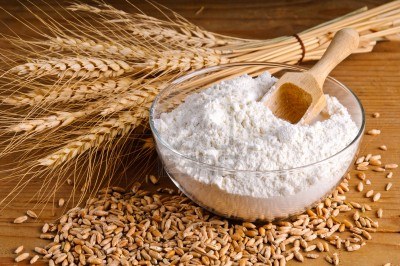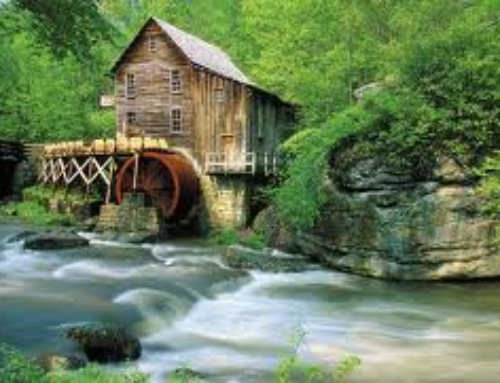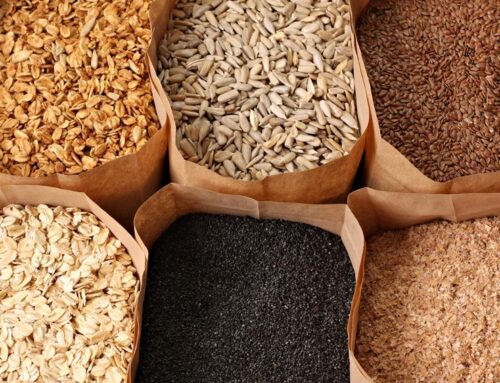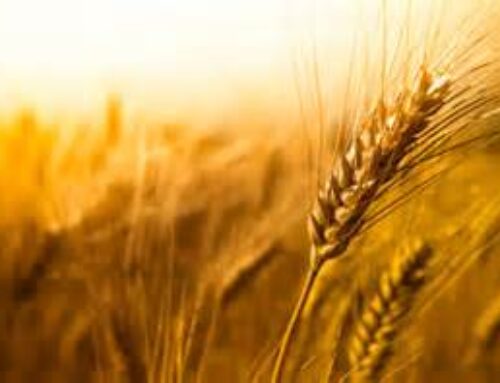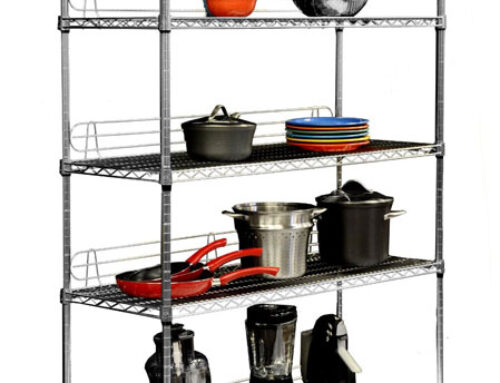Recently, I had the opportunity to attend a workshop given by William Rubel in Topeka, Kansas. I was there as a vendor at the Mother Earth News Fair. I knew beforehand that Mr. Rubel was going to be giving a presentation and he was going to use our GrainMaker mill as part of his talk. While I was setting up my booth the day before the event Mr. Rubel stopped by. This was the first time I had met him and naturally he wanted to see our mill in action and had several questions regarding the mill and about the wheat I had brought along.
As we visited he started talking about having higher moisture in the wheat – up to 19% he said. He told me he soaked his wheat for up to 24 hours before using it! I was instantly suspicious and concerned that he was going to place wet wheat into our mill. This went against everything I had learned – high moisture? Surly he was mistaken, but I continued to listen. He then asked me about sifting. This was interesting to me, as it seemed that just lately I have had more and more folks inquire about this. In my naiveté I imagined my grandmother’s hand held flour sifter with the little red handled crank on the side. To me this just seemed like an extra step in the bread making process, and after all, my GrainMaker mill ground the flour nice and fine on the first pass, so there was no need for me to sift. That led into Mr. Rubel asking me to grind some wheat using our mill so he could see the consistency of the flour.
I explained to him that our mill was adjustable, and thus allows the user to determine their preferred consistency. Knowing what I use for bread making, as well as what virtually everyone that has ever inquired or purchased a mill from us has told me, we all want the same thing – ultra fine flour, just like what you find on the store shelf, but with the benefit of all the good stuff still in the fresh ground flour, I set the knob to the finest position. Much to my surprise, he said, “Oh no, this needs to be much coarser.” What? I was shocked. I do not believe I have ever had anyone tell me the flour was too fine as if that was a bad thing! We take great pleasure when folks tell us how pleased and surprised they are in the fact that our mill produces such fine flour – some even saying the finest they have ever felt coming from fresh milled flour!
That is when he spoke on sifting and gave some history of how things worked in the “food chain” a long time ago. He explained that in upper class societies, one could see how wealthy a family was based on how they milled and sifted their flour, and took care of their servants and their animals. When milled flour is sifted, there are different sizes of screens used. He spoke of “tailings” or “overs” and “throughs”. He explained that as it passed through these screens, the various parts of the wheat were in essence revealed. For example, you could actually see the bran and the middlings.
After it went through all the siftings, you had very nice, fine “white” flour.
What? White flour? I was more than a little concerned and definitely shocked. We were at the Mother Earth News Fair, and folks are grinding their own grains to get as much nutrition out of the grains they are grinding right? Otherwise, why go to all this effort? We put much effort and focus into eating as close to the source as possible and he has just used this dreaded five letter word to describe flour: white.
Admittedly after that first meeting I had more questions and concerns than I had answers for and I was not sure about this presentation. He stopped back the next day and just said hello and we visited briefly. Finally the day of the presentation came and I was looking forward to just being able to attend the talk. When we attend these events, it is normal for me to stay in my booth the entire time. I am generally ok with this as that is my comfort zone. This day though, I was asked by Mr. Rubel to attend and he was going to have me stand when he introduced our mill during his talk. Little did I know what I was about to find out – or be asked to do!
When Mr. Rubel was introduced, I found out that he is a food historian, and that he was knighted by the French for his work on food history. He is the author of *Bread: A Global History and *The Magic of Fire: Hearth Cooking: One Hundred Recipes for the Fireplace or Campfire, and he is also a frequent contributor to Mother Earth News magazine.
As he started to speak and to demonstrate the wheat that he had ground before this talk began, he pulled out several rectangular shaped shallow “boxes” that had different sized screens in the bottom. He spoke of microns on the sizes of the screens. I will admit I didn’t get to take notes during this session as I was called upon by Mr. Ruble to help with the presentation on a couple of occasions while samples of different siftings were passed around the audience. He also asked me to please come up and ready the mill to grind some of the sifted, coarser grain. I am not a public speaker, and while I am comfortable standing in my booth and visiting with folks, it is another story being up on stage in front of an audience. He handed me the headset microphone and told me to introduce myself!
Once that was done, I place this product in the mill and we reground the coarser siftings. At this point I was fascinated! Right before my eyes, it all started to come together. He told us that white bread has been around for centuries. This is not the same white bread that we currently purchase off our store shelves, but healthy white bread made from whole grains obtained by soaking the grain and sifting. If you need more fiber, add in a little more of the bran you sifted out. Experiment with it. Regrind it and sift again. Add an egg or more oil. Don’t be afraid. Don’t rely on getting your nutrition from bread. Eat another salad, have another carrot, and realize that if you wanted all your nutrition from bread, you would have to eat A LOT of bread!
The servants in times of old got the heavier bread, and then what was left was made into loaves for the animals. He showed slides and spoke of “horse bread”. Centuries ago, farmers depended on their work horses. These horses needed more that grass to eat to give them the strength and nourishment they needed for the jobs they had to perform. This horse bread was made from the flour left over after the people got all they needed for their bread.
Well, this was indeed a very fascinating opportunity and I am very excited by what I learned. I still have a few questions, and I am not sure I would do this every time I wanted to bake bread, but I now understand how to obtain this white flour naturally and look forward to trying this out once I get my screens.
~Bonnie Jones
*These are the Amazon.com links to purchase Mr. Rubel’s books: Bread: A Global History and The Magic of Fire: Hearth Cooking
